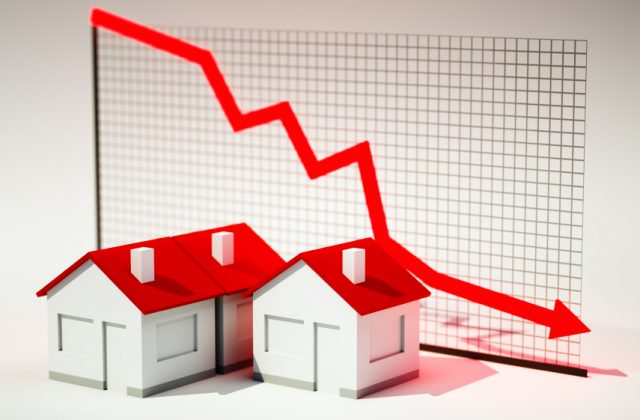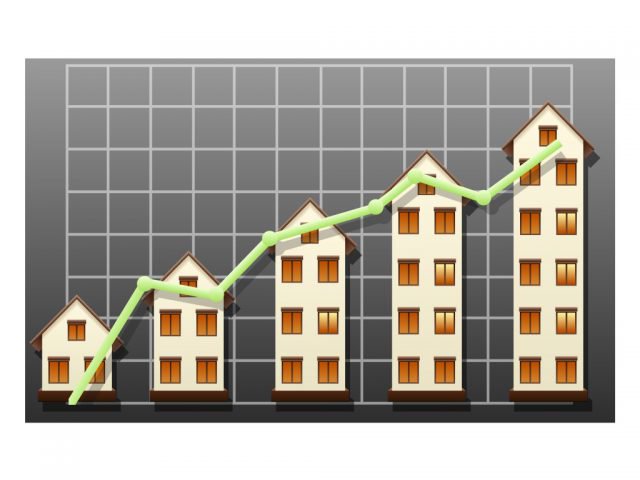Although the country had a record heatwave last week, house price growth has cooled off, falling to 3.3% from 4.6% in May, revealed the latest Nationwide house price index.
Nationwide’s Chief Economist, Robert Gardner, says: “This maintains the gradual downward trend that has been in evidence since mid-2014, though this is the smallest annual rate of increase for two years.
“House price growth continues to outpace earnings, but the gap is closing, helped by a pick-up in annual wage growth, which moved up to 2.7% in the three months to April from 1.9% at the start of the year.
“The slowdown in house price growth is not confined to, nor does it appear to be driven primarily by developments in London. In quarter-on-quarter terms, London has continued to see price growth at or above the rate in the UK overall over the past three quarters, while the annual rate of price growth in the capital remains the second highest in the country.
“Eleven of the thirteen UK regions saw a slowdown in the annual rate of growth in Q2. Most parts of the country continued to see annual house price gains – the exceptions were Wales and Scotland, which recorded small declines.”
Gardner suggests that available housing stock will be snapped up, unless supply increases: “Given the gap between population growth and rates of house building – which has been evident for some time – the housing stock is likely to be used increasingly intensively until building activity catches up.
“There are signs that this has been occurring, with the number of vacant properties trending down since 2008, though Council Tax changes in 2013 impacted reporting and probably overstate the decline in the last two years.
“The strong relationship between supply constraints and vacancy rates is clearly visible at the regional level. As you might expect, regions where affordability is more stretched see far fewer vacancies. For example, in London, the UK region where affordability is most stretched, only 1.7% of the housing stock was vacant in 2014, around half the 3.5% rate prevailing in the North of England.

Heatwave Has Caused House Prices to Cool Off
“Given the apparent supply pressures, it is interesting that instances of under-occupancy are relatively high. For example, in 2014, almost half of owner-occupiers in England lived in a property with two or more spare bedrooms.
“While this may represent peoples’ preferences, it may indicate that the housing stock is not being used as efficiently as it might be, perhaps because of a mismatch between the types of property people want and what is available. For example, it may be that older people are unable to find suitable properties to downsize, frustrating the ability of families to move into larger homes.”1
CEO of haart estate agents, Paul Smith, gives his opinion: “Today’s report of national house price growth slowing is a step in the right direction for affordability but we are still finding that demand for homes is outpacing supply.
“Our data shows there are now 11 prospective buyers chasing each new property instruction across the UK, compared to eight at the same time three years ago. The formation of property chains is still proving difficult; while many are keen to move, and would do so if the opportunity presented itself, the difficulty is in securing an onward purchase.
“This is having a stagnating effect and there is a desperate need for a more liquid market, through an injection of supply. We are in desperate need of Government-driven supply side initiatives, which should include attractive incentives for house builders to get building.
“We are also hearing reports from branches that downsizing has become a dirty word and is seen as carrying negative connotations – that the seller has somehow lost their zest for life. Changing this attitude to release more family homes for second-steppers would ensure our limited housing stock is used in the most efficient way. Without this healthy churn in the market, first time buyers will continue to be priced out.”1
CEO of online estate agent HouseSimple.com, Alex Gosling, adds: “Only the second monthly fall in house prices this year suggests any momentum gathered following the general election in May, has started to ease.
“However, there’s no immediate cause for concern that the housing market is starting to stutter. Typically, the summer months are often slower months for property purchases, as buyers head to the beaches rather than view properties. And April and May did see an unusually high level of buyer activity.
“What we’re seeing overall is a return to normality, although a black cloud does loom overhead in the form of a shortage of stock. The lack of properties coming onto the market remains an issue, and come September, when buying activity typically starts to pick up again, the picture could be an entirely different one.
“Although most regions have seen annual price growth fall, the most noticeable drop is in London, with annual price growth down to 7.3%. London’s buoyant housing market propped up the UK market as a whole during the hard times, now it seems the capital could do with a little propping up itself.”1
CEO of Dragonfly Property Finance, Jonathan Samuels, comments: “The property market is a veritable conundrum right now. The June dip and ongoing slowdown in the rate of annual growth have come despite the fact that demand is picking up and supply is still constrained.
“While the gap between earnings and house price growth may be narrowing, you suspect there will always be a degree of repulsion between the two, like two positive magnets. Wages may be improving, but it’s hard to see them ever getting consistently close to house prices.
“London prices may have softened quite considerably, but they are still comfortably above the UK regional average. Even when London falls, the landing is relatively soft. The fact that Northern Ireland outperformed all other regions in the second quarter highlights the way in which different regions can wax and wane.
“It’s hard to predict where the property market is headed. With a low cost of living, very competitive mortgage rates, renewed political certainty and a strong jobs market, there are many positives. However, should events in Greece spiral out of control, the UK property market will not be immune.”1
1 http://www.propertyreporter.co.uk/hero/house-prices-cool-admid-heatwave.html










